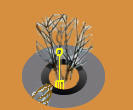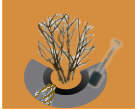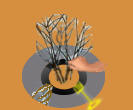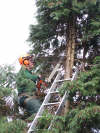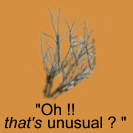|
Lifting and transplanting shrubs and treesIn my experience transplanting shrubs and trees is an exercise requiring some fitness and careful planning. So I'm including guidance to help you deal with this heavy job in the easiest most manageable way.
Transplant shrubs at the right time The start and end of the growing season are useful times for transplanting shrubs and give time to settle into a new soil. New root growth is important to replace damaged roots and reconnect the plant with soil water and nutrients. When transplanting shrubs and trees one of the biggest challenges is to avoid damage. 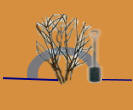
Lifting a large shrub from the hole can be difficult – be careful not to strain your back. Bend at the knees and use your arms and legs not your back to power the lift. Also keep your back straight when lifting. Remove as much soil as possible first, but retain strong branches for use in getting a grip.
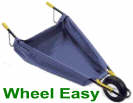
You may have to dig around sufficiently so as to stand on the bottom of the hole. Remove the shrub from the hole to a garden sheet or even better slide onto the Wheel Easy (a sheet with a wheel). The height of a wheel barrow is not ideal when it comes to loading a weighty shrub taken from the hole. I normally work alone these days, but it is worth getting 2 or more people to help when transplanting shrubs that are large. 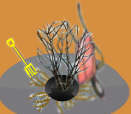
One method of loading a wheel barrow is to put it in a tipping position toward the shrub. Then pull the branches over the wheel barrow. While holding the branches attempt to lever the shrub up as the wheel barrow is returned to a standing position.
It’s far better to
use the Wheel Easy
for moving shrubs.
When transplanting shrubs that have to travel some distance or be kept out of the ground for an extended period wrap the root ball in a plastic bag or sacking.
Space: are you giving the shrub or tree enough room to grow? Will it grow to overshadow other plants, invade a neighbhours property, obstruct pathways, or window views ? Think of 'dwarf' conifer trees as small compared to a Giant Redwood. By my reckoning they can become substantial trees! - Perhaps you're looking for a 'miniature' conifer instead. Transplanting trees too close to the house ? Tree roots will penetrate and destroy foundations. The large leaf area and extensive roots of trees remove considerable amounts of soil water. This dries the soil out and in a dry summer contributes to soil contraction. Too close to the house and this can cause subsidence and weaken foundations. Soil Type: to grow well, your shrub or tree may require a particular type of soil - dry sandy soil, clay, or peat. More on this soon. Rhododendrons and Azaleas for example, won't tolerate limey soils. When transplanting shrubs like these you may need to incorporate peat substitute. 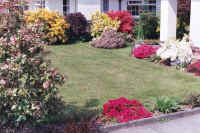
Now for the best part - re-planting. Note:- Rhododendrons, Azaleas, Camellias, and the like need special consideration. See how to plant Rhododendrons, Azaleas and Camellias.
After transplanting shrubs they may wilt a little. I usually prune back any weak shoots. If the soil is moist and the temperature isn’t scorching hot you may think additional watering-in is unnecessary. But an important reason for watering-in has nothing to do with the amount of water, but rather it helps wash out the smaller soil particles and settle them closely around the finer roots. After you make the bed you tuck in the patient.
Further Information on Transplanting Shrubs
|
||||||||||||
